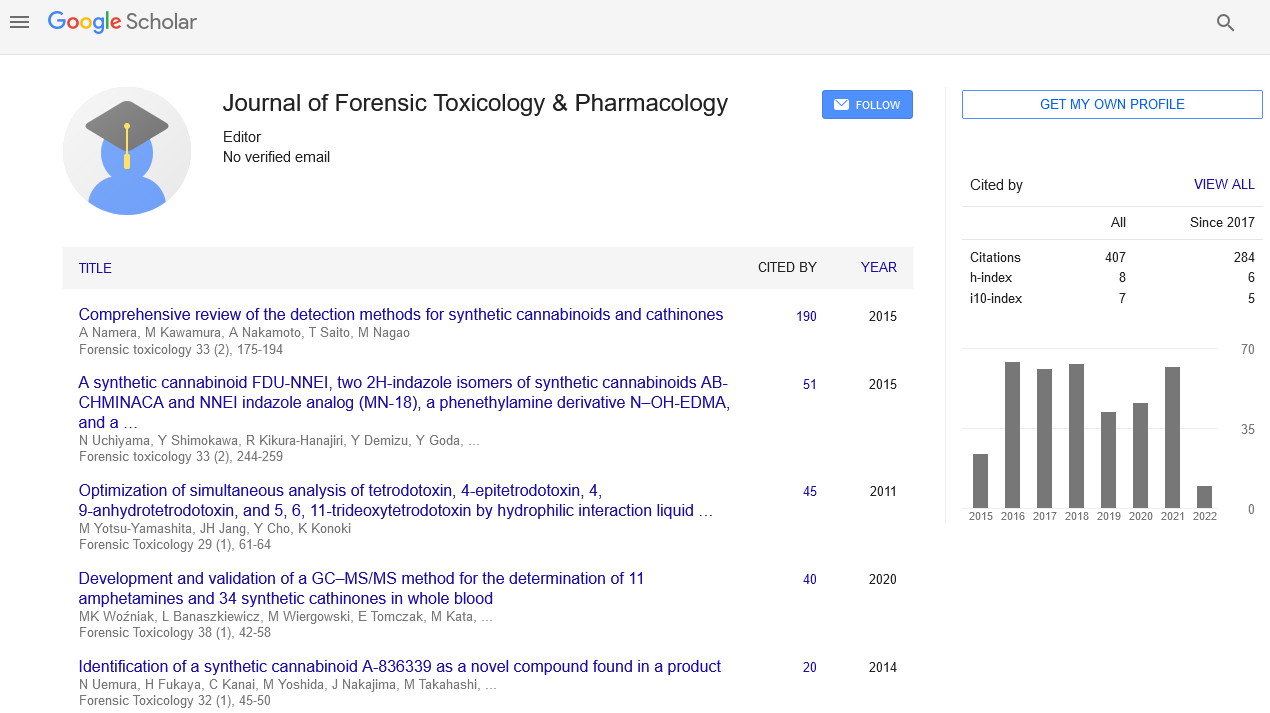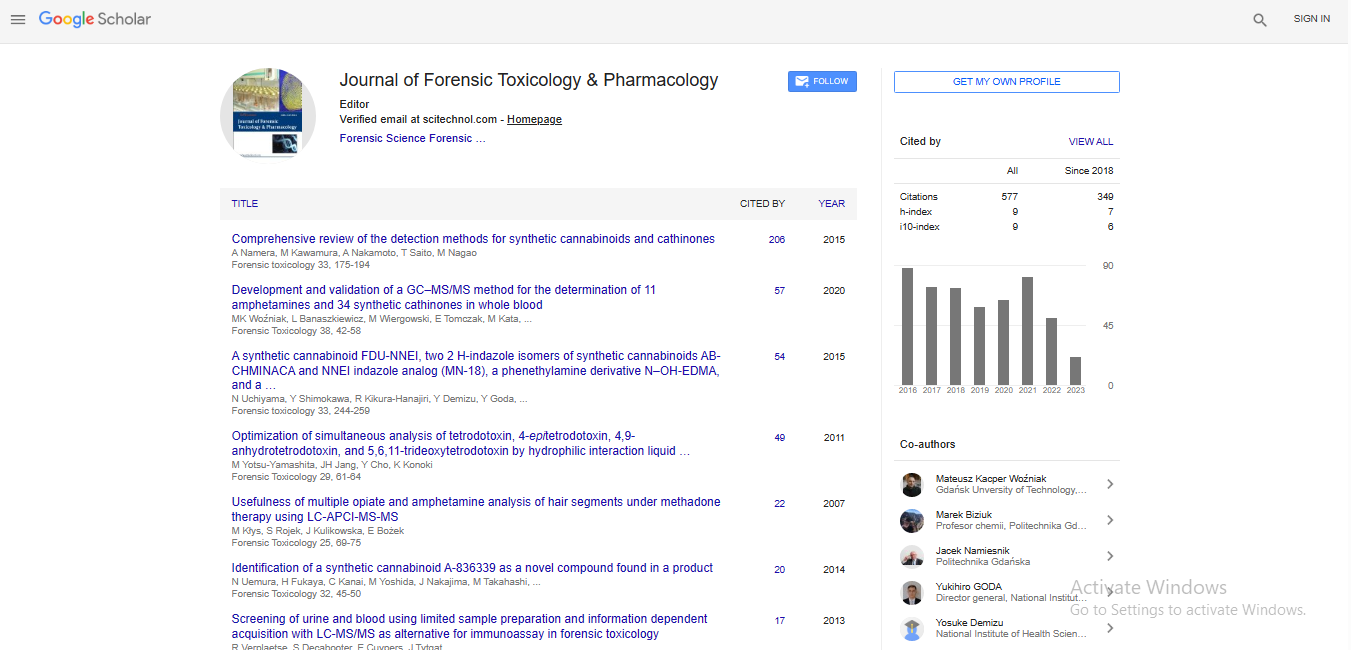Opinion Article, J Forensic Toxicol Pharmacol Vol: 13 Issue: 3
Drug-Induced Liver Injury (DILI): Mechanisms, Risk Factors and Emerging Protective Therapies
Jane Wilson*
1Department of Pharmacology and Toxicology, University of California, Los Angeles, USA
*Corresponding Author: Jane Wilson,
Department of Pharmacology and Toxicology,
University of California, Los Angeles, USA
E-mail: wilsonjane@gmail.com
Received date: 26 August, 2024, Manuscript No. JFTP-24-151885;
Editor assigned date: 28 August, 2024, PreQC No. JFTP-24-151885 (PQ);
Reviewed date: 11 September, 2024, QC No JFTP-24-151885
Revised date: 18 September, 2024, Manuscript No. JFTP-24-151885 (R);
Published date: 25 September, 2024, DOI: 10.4172/JFTP.1000197
Citation: Wilson J (2024) Drug-Induced Liver Injury (DILI): Mechanisms, Risk Factors and Emerging Protective Therapies. J Forensic Toxicol Pharmacol 13:3.
Description
Drug-Induced Liver Injury (DILI) is a major cause of acute liver failure and liver-related mortality worldwide. It occurs when medications cause damage to liver cells, leading to inflammation, tissue damage and potentially liver dysfunction. DILI can be triggered by various factors from common over-the-counter drugs to herbal supplements. Understanding the mechanisms behind DILI and its risk factors is essential to identify new strategies for prevention and treatment.
The development of DILI is influenced by several biological processes. One major pathway involves the formation of reactive metabolites. Many drugs, when metabolized in the liver, are converted into reactive intermediates that can bind to cellular proteins, lipids, and DNA, causing cellular damage. This damage triggers immune responses that can lead to inflammation and further liver injury.
Another mechanism is the direct toxicity of drugs. Certain drugs can accumulate in liver cells and immense their capacity to detoxify. The resulting stress leads to oxidative damage and cell death, contributing to liver injury. In some cases, this damage can be severe enough to lead to acute liver failure.
Several factors increase the likelihood of developing DILI. The most significant is the drug itself. Medications with a high potential for hepatotoxicity, such as certain antibiotics, anti-seizure medications, and statins, are commonly associated with liver injury. Additionally, herbal supplements, often perceived as safe, can also cause liver damage.
Genetic predisposition is another important factor. People with certain genetic variants may be more susceptible to liver damage when exposed to specific drugs. Age and sex also play roles; older adults and women tend to have a higher risk of developing DILI.
One area of interest is the development of antioxidants and antiinflammatory agents. These compounds aim to neutralize the reactive metabolites produced during drug metabolism, reducing oxidative stress and inflammation. For example, N-acetylcysteine, commonly used to treat acetaminophen toxicity, has shown some protective effects in DILI cases caused by other drugs as well.
Another promising approach involves the use of immune modulators. Since DILI often involves an immune response that worsens liver injury, modulating the immune system could help prevent further damage. Immunosuppressive drugs, such as corticosteroids, are sometimes used in severe cases, but their longterm effectiveness remains uncertain. Research is ongoing to identify more targeted immune therapies that could minimize liver injury without suppressing immune function excessively.
Gene therapy and personalized medicine also offer potential solutions for DILI. Understanding genetic variations that influence drug metabolism and liver toxicity could lead to the development of individualized treatments. In the future, genetic screening may help identify individuals at higher risk, allowing for the avoidance of drugs known to cause liver damage.
DILI remains a complex and significant health concern, with its potential to cause severe liver damage and failure. The mechanisms behind DILI are multifactorial, involving both drug-induced direct toxicity and immune-mediated responses. Risk factors such as drug type, genetic makeup and pre-existing liver conditions contribute to the likelihood of liver injury. While current treatments primarily focus on supportive care, emerging therapies targeting oxidative stress, inflammation and immune modulation may offer new hope in the prevention and management of DILI. As research advances, personalized approaches to treating DILI may become more prevalent, offering better outcomes for patients.
 Spanish
Spanish  Chinese
Chinese  Russian
Russian  German
German  French
French  Japanese
Japanese  Portuguese
Portuguese  Hindi
Hindi 
